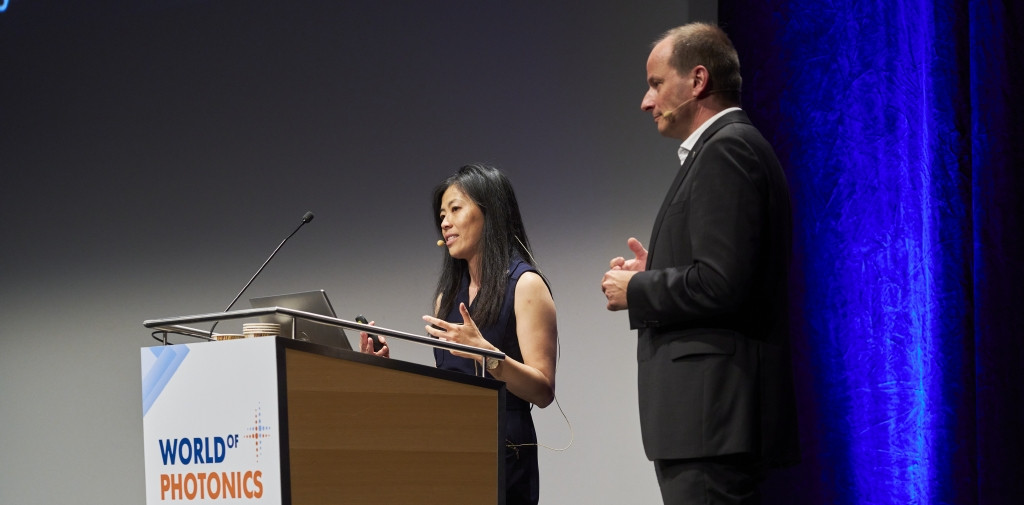
We remember: In December 2022, the National Ignition Facility (NIF) at the Lawrence Livermore National Laboratory (LLNL) in California, USA, achieved a historic breakthrough: researchers provided proof of the feasibility of inertial fusion energy (IFE) by creating a self-sustaining burning plasma. The Fraunhofer ILT, part of the multi-institutional team, on the current status.
The U.S. Department of Energy (DOE) has awarded a four-year, $16 million funding project to a multi-institutional team led by Lawrence Livermore National Laboratory to build the Starfire Hub. The Fraunhofer Institute for Laser Technology ILT is also one of the cooperation partners. The IFE Hub will accelerate the development of high gain target designs as well as the development of manufacturing processes and reactor insertion methods. The technology development is to be accompanied by an IFE power plant simulation. In addition, the project will promote the training and development of future professionals in the field of IFE through partnerships with renowned universities and the implementation of innovative curricula.
“Germany has a long history of research and development in the field of lasers and optics as well as production engineering and power plant technology. We are indeed excellently positioned to develop key technologies for the realization of fusion power plants. Through intensive collaboration in transnational teams, we can accelerate progress and overcome challenges together in order to come closer to implementing fusion energy for a sustainable future,” expects Prof. Constantin Häfner, Representative for Fusion Research of the Fraunhofer-Gesellschaft and Director of Fraunhofer ILT. The USA’s extensive Starfire inertial fusion laser-based program underlines the future viability and potential of inertial fusion energy.
German government promotes key technologies in the field of IFE
In May 2023, the expert commission of the Federal Ministry of Education and Research (BMBF), headed by Prof. Häfner, presented a memorandum outlining the technical realization of a laser-based inertial confinement fusion power plant. This important step underlines the German government’s commitment to promoting the development of key technologies in the field of IFE. The Federal Minister of Education and Research, Bettina Stark-Watzinger, has expressed her support for the IFE approach and announced a program of more than 1 billion euros for the development of fusion technologies over the next five years. This support demonstrates the importance and significance of fusion as a feasible solution for meeting future energy requirements.
At the forefront of the development of cutting-edge technologies related to laser-based IFE are research institutions such as the Fraunhofer-Gesellschaft and the Helmholtz Association, together with universities and German industry. They play a decisive role in promoting R&D in this field and are a key driver of progress in IFE technology. Starfire Hub creates international synergies for inertial fusion energy The LLNL-led center is one of three projects totaling $42 million selected via peer review under the DOE Funding Opportunity Announcement for Inertial Fusion Energy Science & Technology Accelerated Research (IFE-STAR).
“The successful ignition of LLNL’s National Ignition Facility provides new momentum and the scientific foundation for IFE,” explains Dr. Tammy Ma, Director of LLNL’s IFE Initiative. “DOE’s IFE Star Program is the new addition to the U.S. public program, and we are thrilled to bring together an outstanding team to advance fusion energy!”
The project aims to lay the scientific and technological foundations for various laser-based approaches to inertial confinement fusion. In addition to LLNL and the Fraunhofer ILT, the other partners include General Atomics, the Universities of California (San Diego, Berkeley, Los Angeles), the University of Rochester, the Massachusetts Institute of Technology (MIT), the University of Oklahoma, Texas A&M University, Trumpf Inc, Leonardo Electronics US Inc, Livermore Lab Foundation, SLAC National Accelerator Laboratory, Oak Ridge National Laboratory, Savannah River National Laboratory, Xcimer Energy, Focused Energy Inc. and Longview Fusion Energy Systems are among the main players in the project.
Laser-based inertial confinement fusion – from physical experiment to fusion power plant
At the Laser World of Photonics Congress in Munich in June 2023, Ma and Häfner gave a joint plenary lecture on the potential of laser-based IFE as a future energy source. They emphasized the need to create the necessary framework conditions for implementation. This topic received a great deal of attention at the International Fusion Science and Applications Conference in Denver, USA, in September 2023, demonstrating its global importance and the urgency of finding solutions to the technological challenges.
Häfner emphasized the magnitude of the task: “To realize our vision of bringing fusion power plants on stream in the second half of the century, it is critical to maintain investment in basic physics and engineering research while advancing key technologies to facilitate their commercialization. Consider, for example, that a single power plant requires several high-energy lasers. For this alone, we need a fundamental change in laser and optics production. This in turn brings with it the introduction of automated production lines reminiscent of the automotive industry, but with the required precision on the scale of a few optical wavelengths.”


